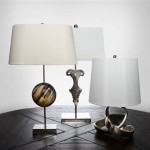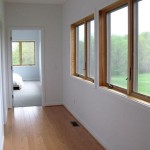What Does An Interior Decorator Do On A Daily Basis?
Interior decorators are skilled professionals who transform spaces into aesthetically pleasing and functional environments. They combine their creativity with a deep understanding of design principles, materials, and trends to create personalized and inviting interiors. Their work encompasses various aspects, from selecting furniture and textiles to coordinating colors, lighting, and accessories. While the specific tasks may vary depending on the project and client, the daily activities of an interior decorator often involve a blend of artistic expression, client interaction, and meticulous planning.
Client Consultations and Project Planning
A significant portion of an interior decorator's day is dedicated to client interactions. This involves initial consultations to understand the client's vision, lifestyle, and budget. Decorators actively listen to their clients' needs and desires, asking probing questions to uncover their aesthetic preferences, functional requirements, and any specific challenges related to the space. Based on these discussions, they develop a comprehensive project plan that outlines the scope of work, timeline, and budget. This plan serves as a roadmap for the entire design process, ensuring that the project stays on track and meets the client's expectations.
Project planning involves conducting thorough research on various design styles, materials, and furnishings. Interior decorators often explore online resources, visit showrooms, and attend industry events to stay abreast of the latest trends and discover new products. They also evaluate the existing space, considering factors such as natural light, room layout, and structural limitations. This detailed analysis informs their design decisions and helps them create a layout that maximizes functionality and visual appeal.
Design Development and Presentation
Once the project plan is established, interior decorators begin the exciting process of design development. This involves creating mood boards, sketches, and 3D renderings to visually communicate their design vision. Mood boards serve as a visual representation of the chosen color palette, materials, and furniture styles. Sketches provide a more detailed outline of the space layout and furniture placement, while 3D renderings offer a realistic preview of the final design. These presentations allow clients to visualize the proposed changes and make informed decisions about the direction of the project.
Design development also includes selecting furniture, lighting fixtures, and textiles that align with the client's style and budget. Interior decorators leverage their knowledge of different brands, materials, and functionalities to source the most appropriate pieces. They carefully consider factors such as durability, comfort, and aesthetic appeal when making selections. Throughout this process, they maintain open communication with clients, seeking their input and feedback to ensure the design reflects their preferences.
Implementation and Project Management
After the client approves the design concepts, interior decorators oversee the implementation phase, which involves the actual execution of the project. This aspect often requires coordinating with contractors, suppliers, and other professionals. Interior decorators meticulously manage the project timeline, ensuring that all tasks are completed on schedule and within budget. They handle logistics, such as ordering furniture, coordinating deliveries, and overseeing installation. Their attention to detail and ability to manage multiple vendors are crucial for a seamless and successful project implementation.
Project management also involves regular site visits to monitor progress, address any challenges that arise, and ensure that the work conforms to the original design vision. Interior decorators are skilled communicators who can effectively translate their design concepts to contractors and ensure that the final result aligns with their artistic vision. This meticulous attention to detail guarantees a high-quality finish and a space that exceeds the client's expectations.
Ongoing Support and Client Satisfaction
Even after project completion, interior decorators often provide ongoing support to clients, offering styling advice, furniture placement tips, or simply answering any questions they may have about maintaining their newly designed space. Their commitment to client satisfaction extends beyond the initial project, fostering a long-lasting relationship built on trust and mutual respect. This approach ensures that clients feel confident and satisfied with their investment, and it allows decorators to refine their skills and build a reputation based on excellence.
In conclusion, the daily work of an interior decorator is a dynamic blend of creativity, client interaction, and meticulous planning. Their ability to understand and translate their clients' vision, combined with their knowledge of design principles and project management skills, ensures that even the most complex spaces can be transformed into beautiful and functional environments.

Daily Life Of An Interior Designer What Does Do On A Basis Design Tastemaker

What Does An Interior Designer Do On A Daily Basis Slice Miami

What Does An Interior Designer Do On A Daily Basis

Daily Life Of An Interior Designer What Does Do On A Basis Design Tastemaker

Interior Design And Quality Of Life Euroluxe Interiors

My Space Inside The Calming Home And Workplace Of Interior Designer Jane Ledger West N

Home Cabinets How To Find Interior Inspiration

Interior Design Inspiration My Favorite Designers On Instagram

How Much Does An Interior Designer Cost Checkatrade

Guide To Profit Margins For Interior Design Businesses Foyr








